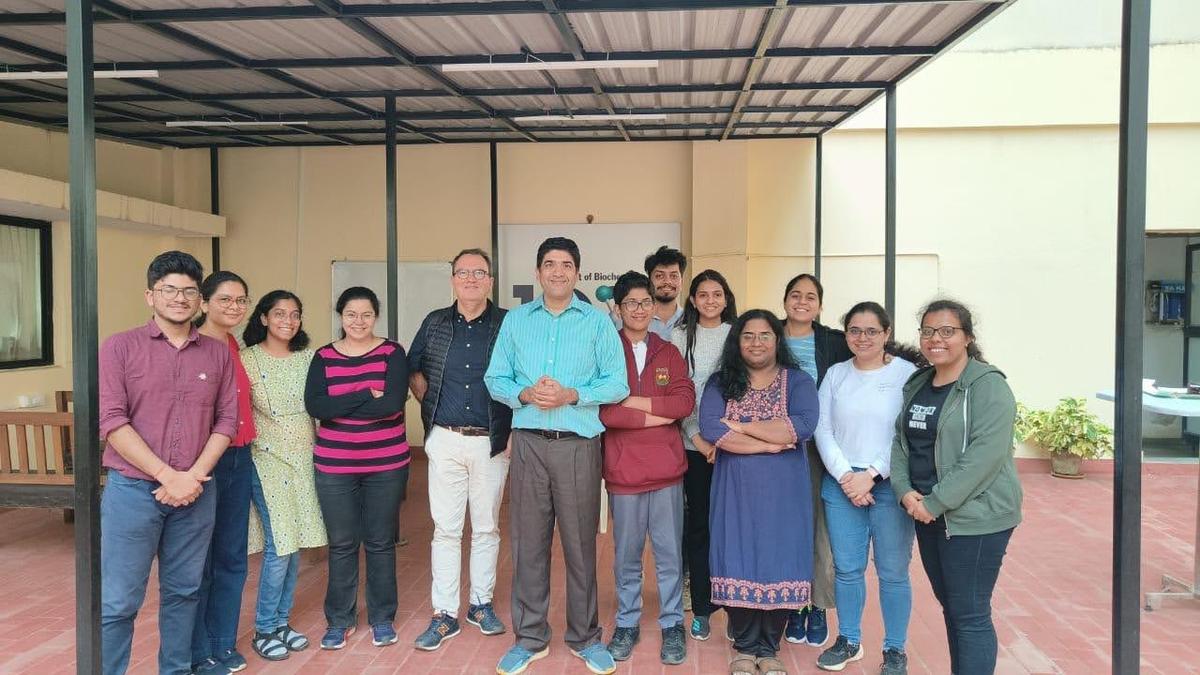Members of the Rajyaguru lab at IISc with Stephan Vagner of Institut Curie.
| Photo Credit: Special Arrangement
When ultraviolet light, certain chemical compounds or even normal copying mistakes harm our DNA, cells rush to fix the damage. Doing so means making the right repair proteins — but also not too many.
Using baker’s yeast and human skin cells, a new study has shown that cells temporarily slow the step in which protein-building machines read messenger RNA, or mRNA, for specific repair genes. In this process, two guardian proteins act like traffic lights that turn those messages from green to red until the emergency has passed.
The work uncovers a previously hidden layer of the DNA damage response that prevents both dangerous under-repair and wasteful over-repair.
“It is a smart, evolutionarily conserved strategy that helps cells survive,” Indian Institute of Science associate professor and the study’s lead investigator Purusharth I. Rajyaguru said.
The study, together with researchers at Institut Curie, Paris, was published recently in EMBO Reports.

A pictorial representation of the study. The cell is like a forest, where a bonfire burns uncontrollably, denoting damaged DNA. Fireflies carry buckets of water (the RNA granules containing Scd6 protein, which pauses translation of Srs2 mRNA) to douse the fire.
| Photo Credit:
Space Arrangement
The researchers attached green fluorescent tags to two proteins, Scd6 (yeast) or LSM14A (humans), and filmed living cells. When the team damaged DNA by treating it with hydroxyurea, the tagged proteins condensed into bright dots called RNA granules. Further analysis revealed that the hydroxyurea made Scd6 clump together while removing the stress dissolved the clumps. This indicated the holding areas were reversible rather than the cell’s trash bins.
Inside those granules, the researchers found that Scd6 captured the mRNA for an enzyme called Srs2, which unwinds DNA. This action caused the cells to produce lower quantities of Srs2. The researchers confirmed this by mutating either of Scd6’s two RNA-gripping regions and found that it couldn’t capture the mRNA to make Srs2.
Yeast lacking in the Scd6 protein grew poorly when extra Srs2 was present inside cells when the DNA was treated with hydroxyurea, proving that reducing Srs2 production could actually protect the cell.
The team found a similar process in human cells. The LSM14A protein also formed granules after hydroxyurea treatment. When LSM14A production was knocked down, the cell made more of two enzymes called RTEL1 and LIG4 that encouraged the cells to stitch broken DNA ends together in an error-prone way.
“Interfering with RNA granule dynamics might be a way to disrupt stress adaptation in cancer cells, making them more vulnerable to chemotherapy,” Dr. Rajyaguru said. “We are also addressing this aspect in the context of neurodegeneration in our laboratory.”
Published – July 12, 2025 08:00 am IST
